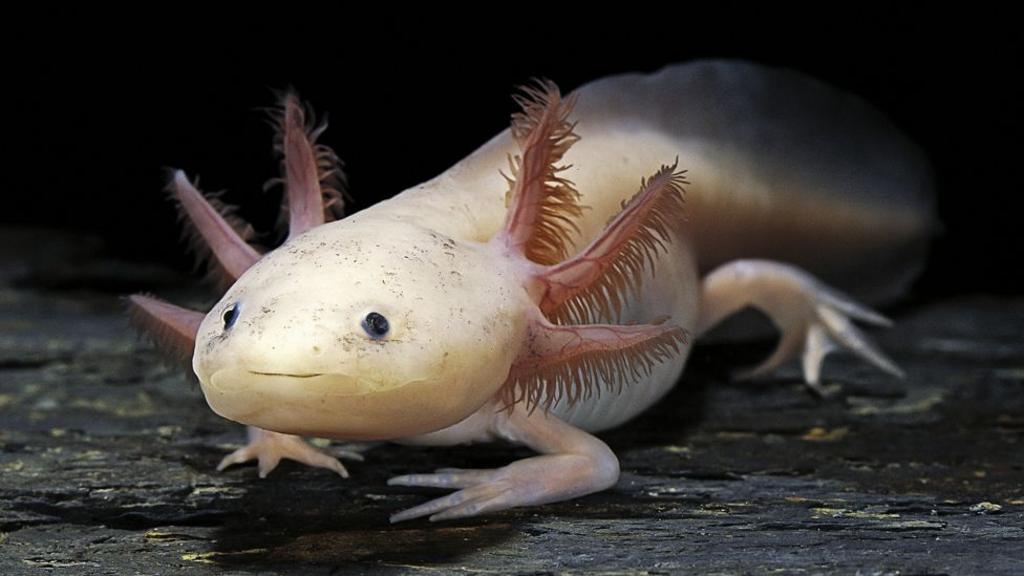One of the planet’s most critically endangered amphibians—the distinctive, ever-grinning Mexican axolotl—has shown remarkable signs of recovery following its introduction into artificial wetlands, according to new scientific research.
Offering renewed optimism for the species’ survival, researchers released 18 captive-bred axolotls into both restored and artificial wetlands just outside Mexico City, where the animals have now begun to flourish.
Equipped with radio transmitters, the axolotls were monitored as they adapted to their new environments, with results showing that the animals “survived and foraged successfully at both sites,” and even gained weight during the study.
Lead author Dr. Alejandra Ramos of the Autonomous University of Baja California described the outcome as “an extraordinary result.”
The study’s findings, published in the journal PLOS One, suggest that the axolotl’s return to its original habitat is increasingly viable, raising hopes among conservationists.
Historically, Xochimilco’s waterways—shaped by longstanding agricultural practices and fed by pristine mountain springs—provided a haven for thousands of axolotls.
However, due to the rapid expansion of Mexico City and resulting urbanization and pollution, wild axolotl numbers plummeted, with some estimates at one point putting their wild population at as few as 50 individuals.
“If this species disappears, we lose an essential part of Mexican identity,” commented Dr. Luis Zambrano, co-lead researcher from the National University of Mexico.
The axolotl holds a revered status in Mexico’s cultural heritage. According to Aztec mythology, the salamander-like creature is believed to be an incarnation of the god Xolotl, who evaded capture by transforming into an aquatic salamander.
“If we can restore this wetland ecosystem and re-establish the axolotl’s population within a metropolis of over 20 million people,” Dr. Zambrano remarked, “it gives me hope for humanity’s future.”
To facilitate the axolotl’s return, the research team worked in collaboration with local farmers and volunteers to create wetland refuges, incorporating natural filtration systems to improve water quality.
Captive-reared axolotls were released at two sites: one in Xochimilco and another in a former quarry now transformed into an “artificial wetland” over several decades.
Each individual was equipped with radio tags to allow for precise tracking.
“The most encouraging outcome is that all survived,” Dr. Ramos shared with BBC News. “Moreover, those we recaptured had actually gained weight—they were thriving in their new environment.”
Monitoring efforts also revealed notable social behaviors, with some axolotls consistently associating with specific companions—hinting at possible social bonds, Dr. Ramos noted.
Despite their rarity in the wild, axolotls are abundant in research laboratories and aquariums globally, prized for their exceptional regenerative abilities. Scientists are actively studying whether these regenerative properties might inform future medical advancements.
Nonetheless, significant challenges remain in rehabilitating the axolotl’s natural habitats within Mexico City, where continued restoration work is essential for the wild population’s recovery.
“Habitat loss is a worldwide concern for countless species,” Dr. Ramos emphasized. “Restoration projects are demanding but entirely achievable with widespread participation.”
“Everybody can contribute—you don’t need to be a scientist to make a difference,” she concluded.
Eighty years after World War Two, shattered forests and scarred landscapes offer a silent testament to the devastation of wartime bombing and Nazi oppression.
The “near-threatened” spider species employs expert camouflage, blending seamlessly onto branches as it waits patiently for its prey.
Without urgent intervention, Wales could face an “unrecognisable future,” according to the country’s future generations commissioner.
A devastating wildfire rapidly moving through Glen Rosa valley has erased the gains of a decade-long conservation effort in just a matter of days.

